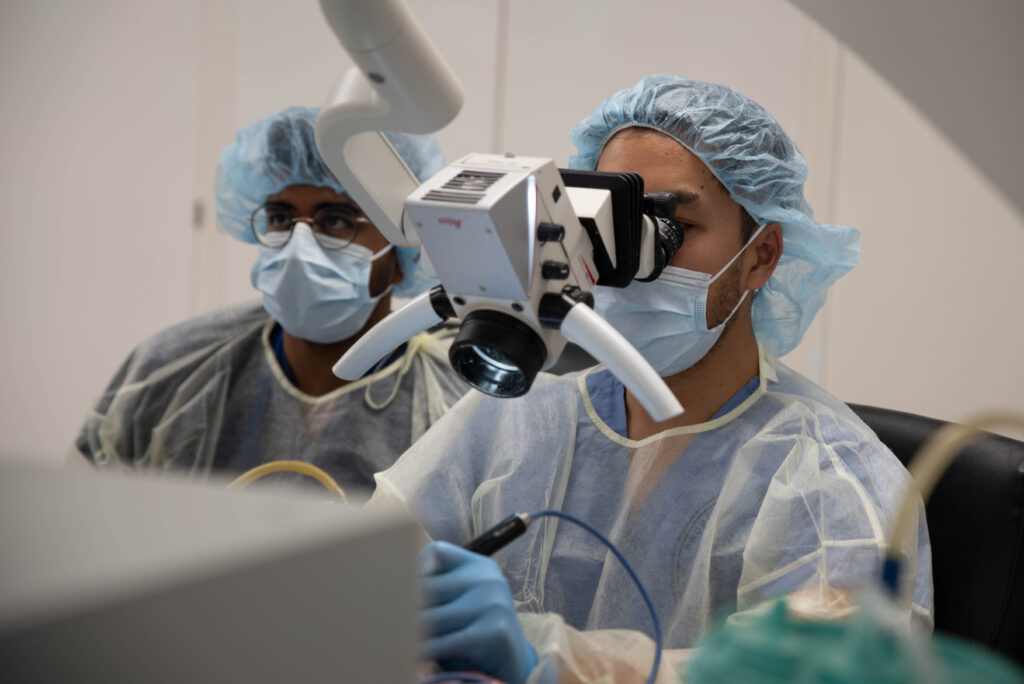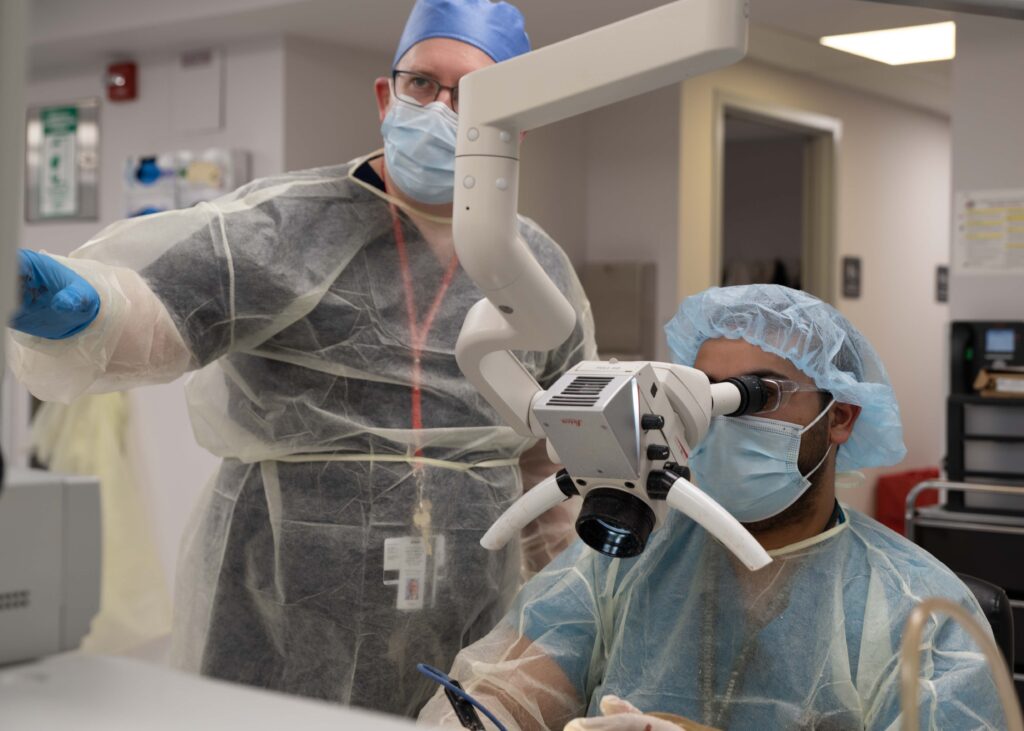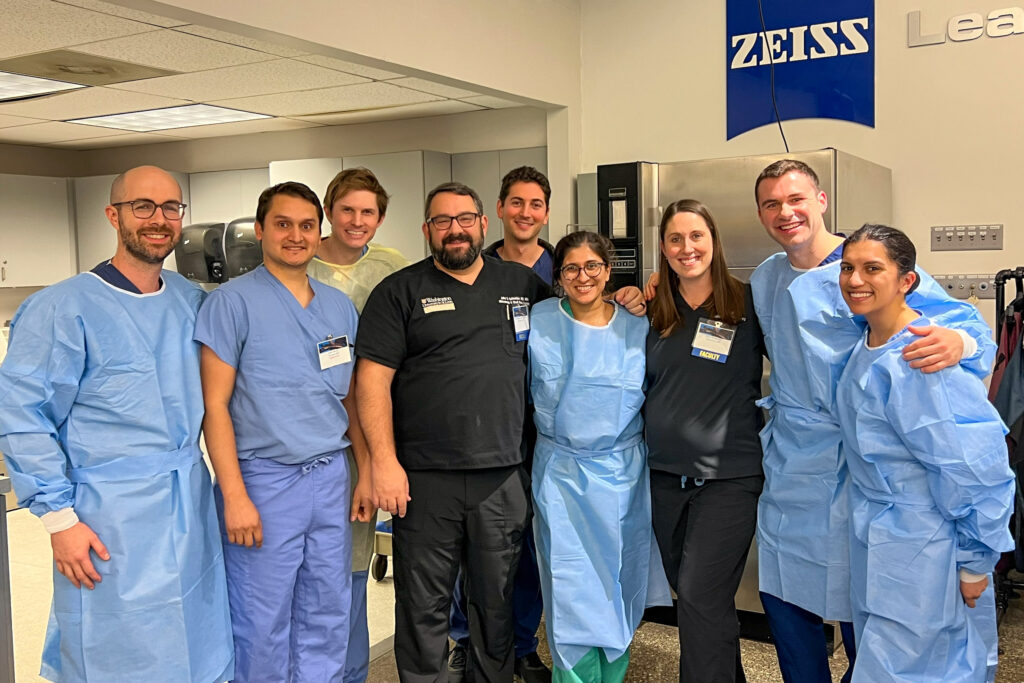A pair of surgical simulation courses on Dec. 3 offered ENT residents valuable opportunities to train with experts in lateral skull base approaches and endoscopic sinus surgery. Each full-day course allowed residents exposure to a variety of techniques used by surgeons throughout the Midwest.
Lateral skull base surgery
The annual lateral skull base course at Washington University provided ENT and neurosurgery residents exposure to interdisciplinary aspects of skull base surgery, including retrosigmoid and translabyrinthine approaches. Course instructors included WashU ENT surgeons Craig Buchman, MD, Jacques Herzog, MD, Cameron Wick, MD, Nedim Durakovic, MD, Kevin Zhan, MD, and Ben Speaker, MBBCh. Neurosurgery faculty included Albert Kim, MD, PhD, Ananth Vellimana, MD, and Sean McEvoy, MD. Neurosurgeon Michael Chicoine, MD, and two residents from University of Missouri, Columbia, were also present.

Course lecturer Cameron Wick, MD, explained the importance of multidisciplinary training to otolaryngology and neurosurgery residents.
“Multidisciplinary skull base surgery is the gold standard, because we each learn from and lean on each other’s expertise,” said Wick. “The opportunity for our residents to practice in a multidisciplinary manner instills the importance of that relationship.”
ENT resident David Lee, MD, appreciated the interdisciplinary nature of the course.
“The lateral skull base lab provided a valuable hands-on surgical experience,” said Lee. Working side by side with our neurosurgery colleagues to learn complex anatomy and surgical techniques is an experience that transfers directly to the operating room.”
The strong faculty presence made an impression on ENT resident Jordan Varghese, MD.
“This course provided an incredible opportunity to learn approaches to the lateral skull base first-hand from respected leaders in both neurosurgery and neurotology, he said. “These interdisciplinary sessions really highlight the benefit to patients that comes from strong collaboration and collegiality between our departments.”

Techniques in endoscopic sinus surgery
Another annual course – Techniques in Endoscopic Sinus Surgery- offered by the Practical Anatomy and Surgical Education lab at Saint Louis University was co-directed this year by WashU rhinologist Nyssa Farrell, MD, and Joe Brunworth, MD, from SLU.
The course provided ENT residents valuable hands-on exposure to sinonasal anatomy; functional endoscopic sinus surgery; frontal sinus surgery; and skull base surgery. Provided lectures included information on medical therapy for chronic sinusitis, nasal airway obstruction, pediatric sinus disorders and autoimmune diseases of the nose and sinuses.
Faculty from WashU included Farrell and Rhinology Division Chief John Schneider, MD. Faculty and residents from no fewer than 11 academic medical centers across the Midwest were also present. The invited guest lecturer this year was Philip G. Chen, MD, from University of Texas, San Antonio.
“The course overall was a huge success,” said Farrell. “Not only did it allow residents to interact and learn from prominent rhinologists across the Midwest, it also allowed them to work with residents of other training programs and to see how techniques can vary amongst surgeons.”
ENT resident Amrita Hai-Raj, MD, marveled at the advanced level of the course.
“From nasoseptal flaps to frontal sinus work to sphenopalatine artery ligation, it was awesome to get the chance to do more advanced techniques as well as to hone our skills in basic endoscopic sinus surgery,” said Hari-Raj. “This was also an invaluable opportunity to interface with otolaryngology faculty and residents from around the country, and best of all, it was right down the street from WashU!”
